Frameless cabinets are growing in popularity. Their sleek design fits modern interiors. But without a frame, they need specific hinges. What kind of hinge is commonly used on frameless cabinets? Let’s explore that from my experience as a display fixture supplier. The most commonly used hinge on frameless cabinets is the concealed European hinge, offering clean looks, smooth operation.
Table of Contents
ToggleUnderstanding Frameless Cabinets
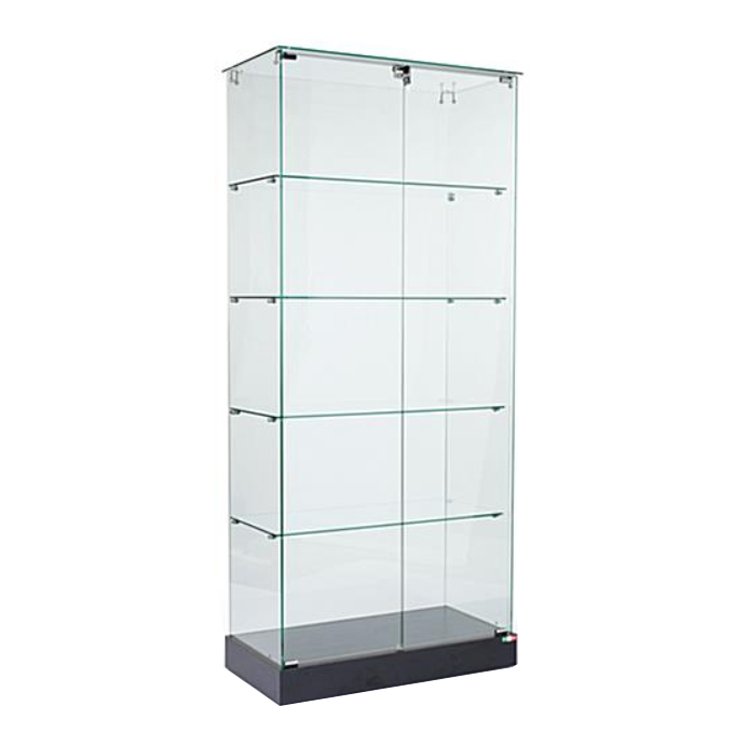
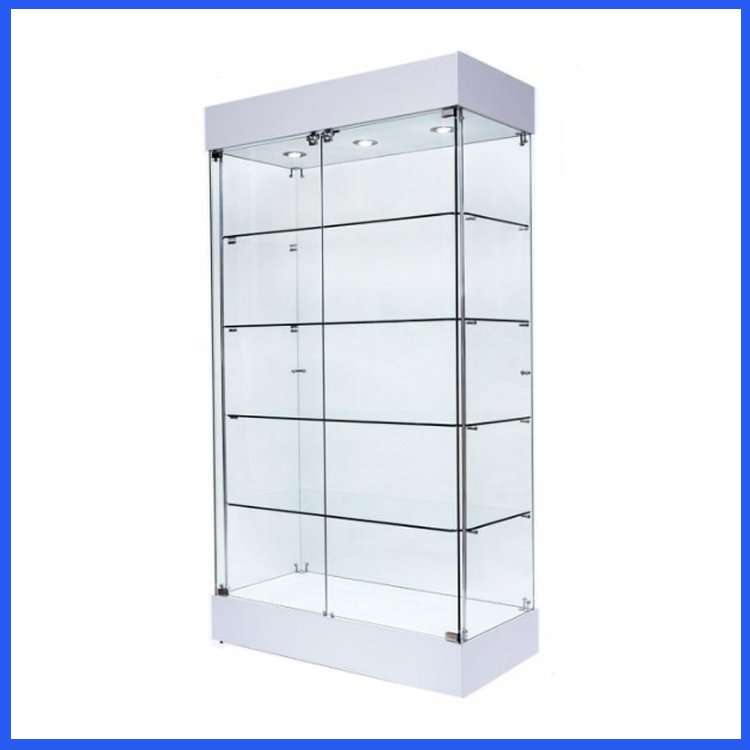
Frameless cabinets are designed without a face frame, which sets them apart from traditional framed options. This modern construction style allows the cabinet doors to attach directly to the cabinet box. The result is a sleek and uninterrupted front surface, which has become highly popular in both commercial and residential spaces. In retail applications, frameless cabinets provide maximum accessibility and a contemporary look.
Their clean lines suit modern boutiques, especially in European-style settings like Sweden or urban areas in the USA and Australia. Customers often seek this minimalistic style to create an open, uncluttered environment. Frameless cabinetry supports this need while maintaining structural integrity through thicker cabinet box panels.
Unlike face-frame cabinets, frameless models require a precise and reliable hinge system. Because there’s no outer frame to absorb alignment issues, everything depends on accurate installation and dependable hardware. That makes the choice of hinge extremely important. When doors go out of alignment, there’s no lip or trim to hide the gaps. This visibility forces higher tolerance in both materials and craftsmanship.
Display cabinet builders and fixture suppliers often turn to European concealed hinges for this reason—they offer easy adjustments in multiple directions, making it simpler to achieve the required precision on frameless doors. The overall design philosophy relies on smooth motion and seamless appearance, and that all starts with the right hinge.
Functionally, frameless cabinets offer better storage efficiency. Since there’s no center stile or frame to block the opening, users can fully access the interior. This benefit is especially valuable in retail and boutique displays, where quick access to merchandise is essential. Products like jewelry, collectibles, or small boxed items must be retrieved easily during customer interactions. With frameless setups, even larger items fit without obstruction.
The open structure allows for flexible shelf configurations and maximizes space utilization. Buyers in our customer base, such as Ariel from Sweden, often mention this advantage when customizing layout plans for small shop interiors.
Another key factor driving the popularity of frameless cabinets is their compatibility with modern display aesthetics. Retailers want furniture that blends into the background and highlights the product—not the fixture. Frameless styles accomplish this effortlessly. Their flush doors, hidden hinges, and uniform edges create a neutral backdrop, allowing merchandise to take center stage.
Whether used for glass showcases, trophy displays, or cosmetics shelving, frameless designs provide a consistent, polished look. This design approach aligns with the growing preference for minimalism, which dominates many current store designs across international markets. Customers who value simplicity and uniformity tend to gravitate toward this cabinet structure.
Choosing frameless cabinets also makes production and assembly more streamlined. Manufacturers don’t need to build separate frames or attach decorative front panels. This simplifies the cutting and joining process. Fewer components mean reduced material cost and faster turnaround, which benefits both suppliers and customers. From a wholesale perspective, this efficiency translates into better pricing and quicker delivery times.
Our factory often ships bulk orders of frameless cabinets with pre-attached hinges, helping clients reduce labor time on arrival. For many international customers, especially those with multi-location stores, these time savings are just as valuable as the product itself.
Types of Hinges for Frameless Cabinets
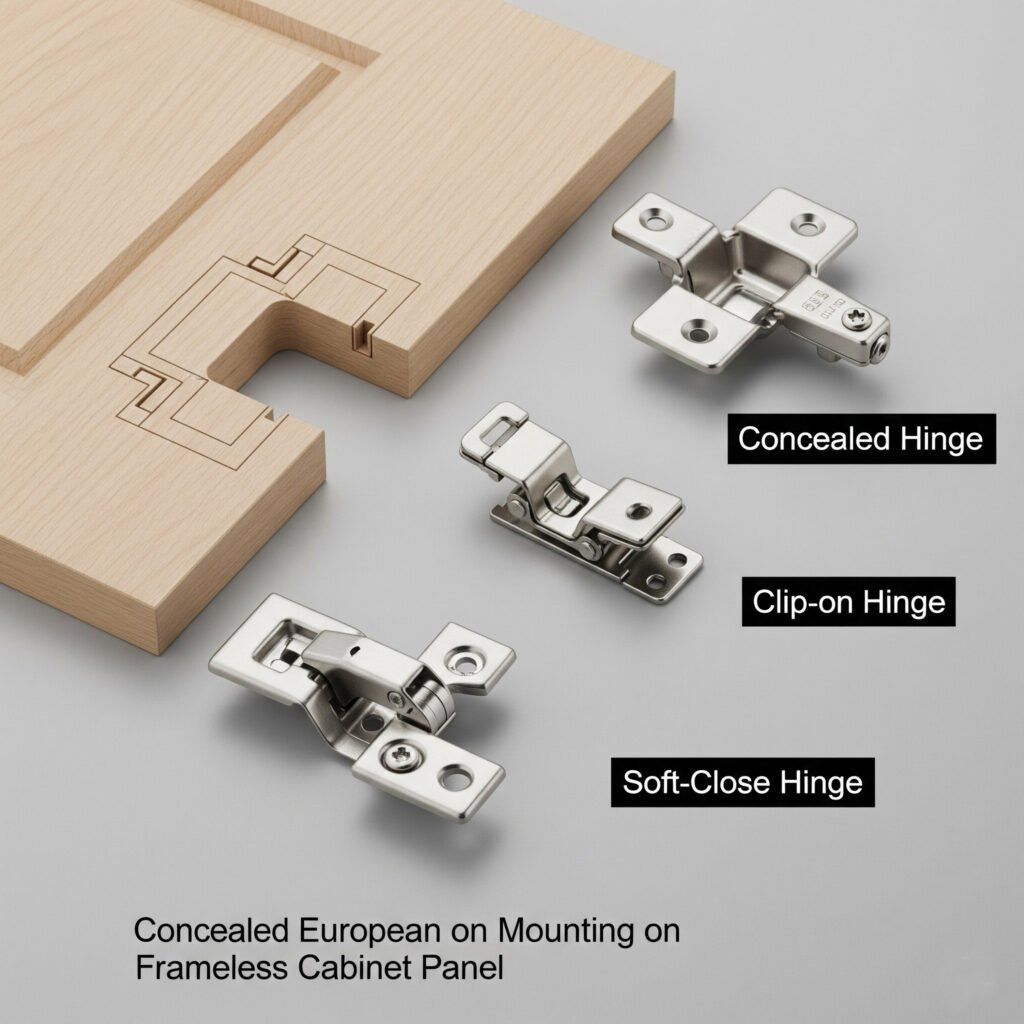
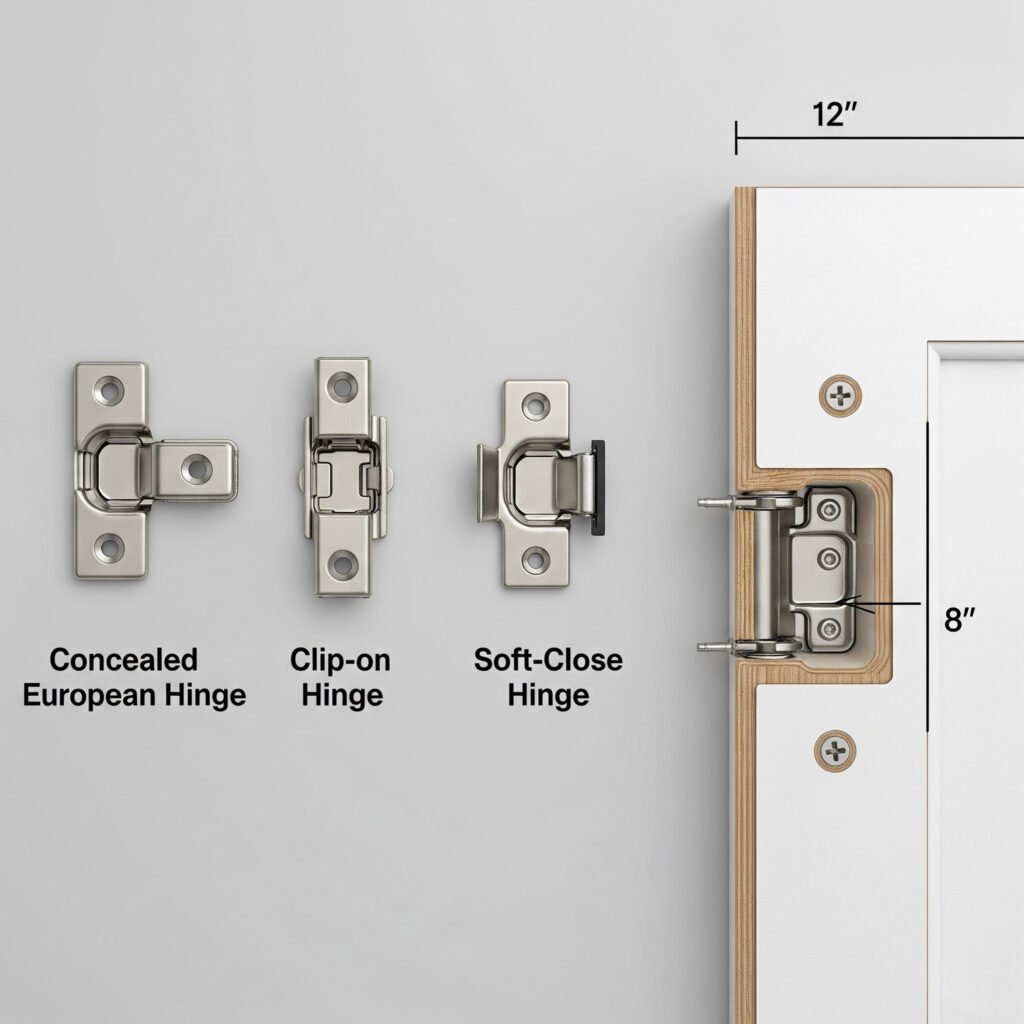
Choosing the correct hinge defines how well a frameless cabinet functions. The lack of a face frame means there’s no room for error. Every hinge must deliver stability, alignment, and durability. This section introduces the most suitable hinge types for frameless cabinet setups and explains how they serve different functional needs while maintaining a clean appearance. Each type listed below is commonly used by retailers, wholesalers, and boutique display designers who value both aesthetics and practicality.
European Concealed Hinges
European concealed hinges remain the industry standard for frameless cabinet construction. These hinges attach directly to the inside of the cabinet box and remain hidden when the door is closed. This setup allows the cabinet to maintain its seamless, minimalist appearance, which appeals to modern retail design.
One of the key advantages of this hinge is its multi-directional adjustment capability. Most models allow height, side, and depth changes through small screw turns. This fine-tuning ensures that the door aligns perfectly with the cabinet body, which is critical for frameless installations. Misalignment can make even a premium fixture look poorly built.
In addition to their precision, many European concealed hinges include a soft-close feature. This function allows the door to close gently, preventing noise, reducing stress on the cabinet frame, and protecting delicate items like glassware or boutique merchandise. These hinges are popular across international markets, including Sweden and the United States, due to their long-term durability and wide accessibility. Retailers consistently choose this hinge when creating a flush, professional cabinet layout.
Clip-On Hinges
Clip-on hinges simplify the installation and adjustment process. These hinges operate using a two-part system—one part mounts inside the cabinet, and the second attaches to the door. With a gentle push, both parts connect, and the hinge locks into place.
This tool-free attachment system saves time during assembly and adjustment. For store fixture suppliers managing volume orders, this convenience matters. A technician can remove or reposition a cabinet door in seconds, which streamlines warehouse setup or showroom reconfiguration.
Furthermore, clip-on hinges work exceptionally well in tight retail spaces. They offer the same alignment precision as traditional European hinges but add operational speed and user-friendly maintenance. For example, in a smoke shop or jewelry store, a damaged door can be quickly detached and replaced with minimal downtime.
Despite their simplicity, clip-on hinges maintain a high standard of build quality. Many models feature soft-close dampers and adjustable mounting plates. These upgrades ensure that even basic cabinets meet professional display expectations. For wholesalers or boutique owners needing quick turnover without sacrificing precision, clip-on hinges represent a practical solution.
Full Overlay Hinges
Full overlay hinges help frameless cabinets achieve a clean look by covering the full cabinet edge when the door is closed. This overlay hides the side panel completely and creates an uninterrupted, contemporary surface across multiple units.
A primary strength of full overlay hinges is their ability to handle heavier door materials. Cabinets using tempered glass or thicker E1-grade board benefit from the added support these hinges provide. The structure of the hinge arm distributes weight evenly, reducing long-term wear or sagging.
These hinges also improve visual symmetry across modular display units. When cabinets sit side by side, a full overlay design ensures consistent spacing and alignment. This consistency matters in showrooms, boutiques, and trade displays where image impacts sales.
Additionally, many full overlay hinges offer built-in buffers or adjustable closing speeds. These help protect both the product inside the cabinet and the cabinet itself. For example, in an upscale retail environment, even one loud slam can detract from the shopper’s experience. A full overlay hinge with dampening prevents that disruption and elevates the overall impression of quality.
How to Choose the Right Hinge for Frameless Cabinet
Consider Door Material and Weight
Choosing the correct hinge starts with understanding the door’s material and weight. Frameless cabinets often use a variety of door types—solid wood, particleboard, glass, or mixed materials. Each has a different weight and structural behavior. For example, tempered glass doors are heavier and demand stronger hinge arms with reinforced steel components. E1-grade engineered board is lighter but still needs solid support to prevent sagging over time.
Softwood doors may warp slightly under humidity, which places additional stress on hinge alignment. To avoid long-term issues, it’s essential to select hinges rated for the specific door weight. Many hinge manufacturers provide load-bearing limits; always verify these before installation. Heavy doors should pair with full-overlay hinges, which offer broader surface contact and stability. Lighter doors might work with half-overlay or inset options.
By matching the hinge capacity to the door’s properties, durability increases, and display safety improves. Skipping this step risks misalignment, loose doors, and product damage in high-traffic settings.
Evaluate Opening Angle Requirements
Another important consideration is the opening angle of the door. Retail display needs vary, and the hinge must accommodate those needs. A standard European hinge opens to around 110 degrees, which works well for most applications. However, larger or corner units may benefit from 155-degree or 165-degree hinges, which allow the door to swing completely open for full access.
In trophy or boutique displays, wider access makes shelf arrangement easier and improves customer interaction. On the other hand, in tight storage environments or narrow aisles, a wide-swing hinge may cause collisions or block pathways. Each retail scenario requires a different approach. Evaluate the door swing clearance and surrounding fixtures carefully. If needed, limit the door opening using restrictor clips.
These control the arc and prevent damage from overextension. By understanding how far the door needs to open, one can avoid both underperformance and unnecessary wear on the hardware. Thoughtful angle selection improves both safety and convenience.
Look for Multi-Directional Adjustability
Fine-tuning is essential with frameless cabinets, where every millimeter matters. Three-way adjustable hinges offer the best performance. They allow vertical, horizontal, and depth movement after installation. That means you can align the door precisely with the cabinet box—even if the mounting holes are slightly off. Without this flexibility, installers may struggle to close gaps or correct minor tilts. Misaligned doors ruin the clean aesthetic frameless cabinets are known for.
Worse, misalignment invites dust into the unit and reduces product protection. Most concealed European hinges now feature multi-directional adjustment screws, often labeled for convenience. These allow quick corrections without removing the door entirely. Especially in retail environments, where displays must look sharp and function flawlessly, adjustment capability is non-negotiable.
Adjustability also reduces the learning curve for first-time installers. For wholesale customers, this simplifies client onboarding and minimizes after-sales service requests. By ensuring adjustability, one secures visual consistency and long-term reliability.
Match the Hinge Overlay to the Cabinet Design
Overlay refers to how much of the cabinet box the door covers when closed. In frameless cabinets, overlay style affects both appearance and function. Full overlay hinges are common—they make the door cover the entire cabinet edge for a seamless look. This is ideal for boutique, cosmetics, or jewelry displays, where minimal gaps elevate visual appeal. Half-overlay hinges, in contrast, allow two doors to share a single panel, often seen in storage applications.
Inset hinges place the door flush inside the cabinet opening, exposing the full frame edge. Although rarer in frameless systems, some designers use inset hinges for stylistic effect. Matching the right overlay type with the cabinet layout is critical. A mismatch can cause door binding or leave unwanted gaps. Most hinge packaging specifies the overlay range, so double-check before purchase. Proper overlay choice ensures smooth operation, visual harmony, and maximum retail impact.
Why Fairwill Display
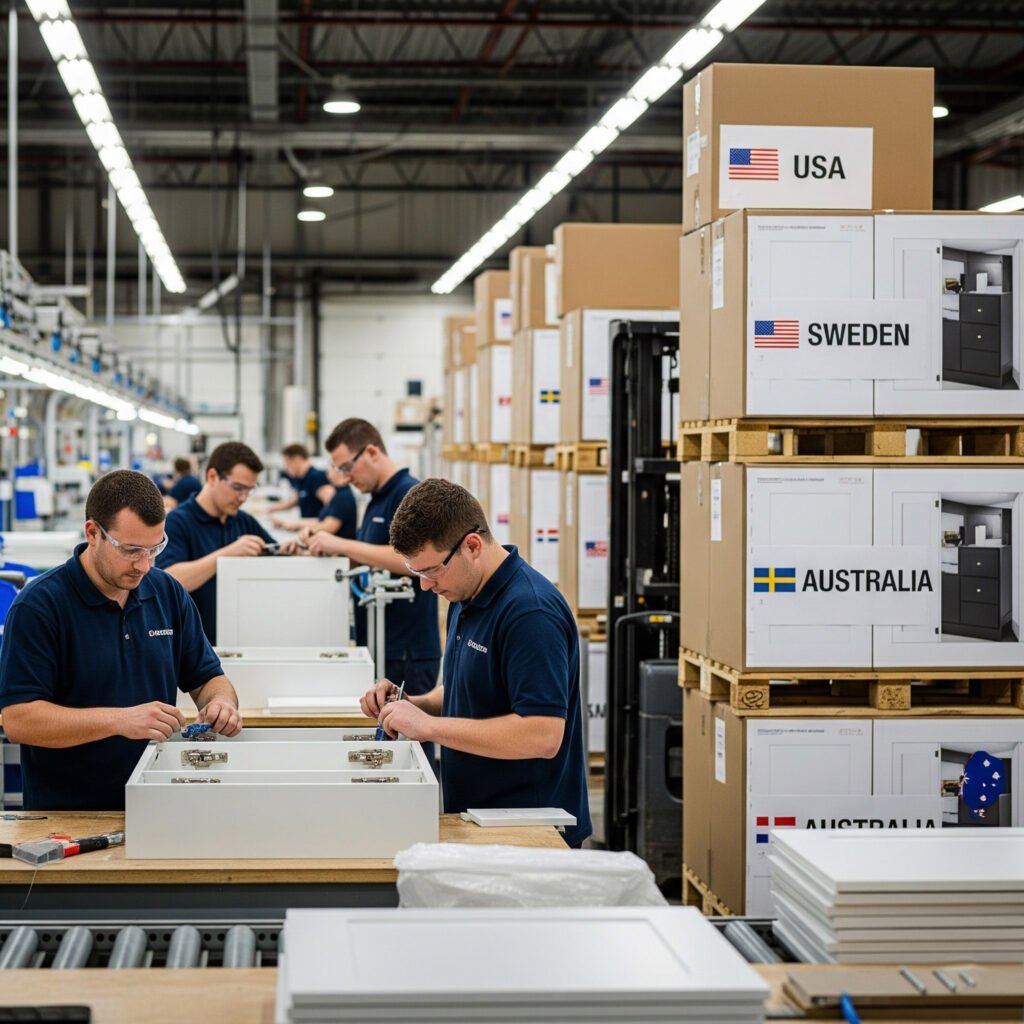
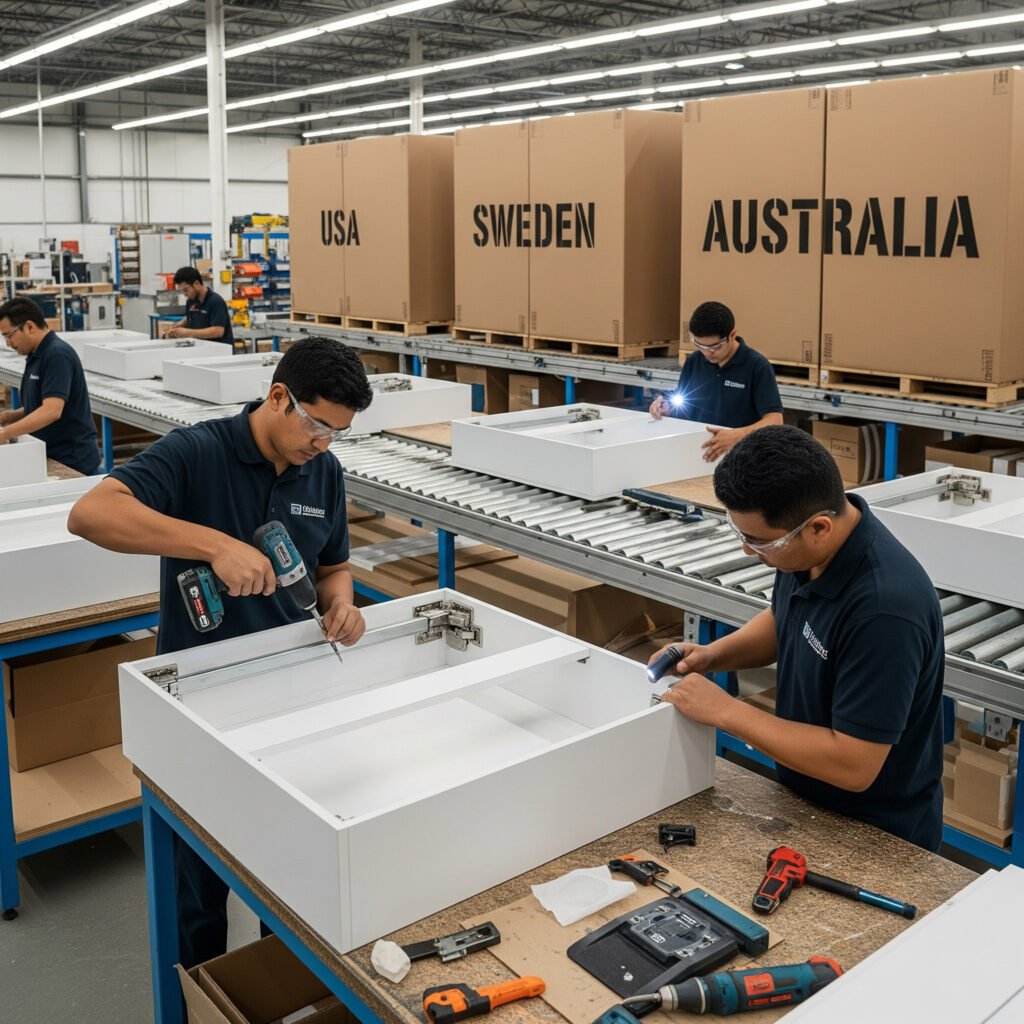
Real Cost Savings Without Compromising Quality
Working with Fairwill Display gave us a clear financial advantage. As a wholesaler managing multiple locations, price always matters—but quality cannot be ignored. Fairwill Display struck that balance perfectly. Their products are made at their own factory in China, so there’s no middleman inflating prices. That factory-direct model saved us thousands.
But cost wasn’t the only win. Their cabinets are made with E1-grade boards and tempered glass, which exceeded our expectations. Most suppliers we contacted offered cheaper alternatives with lower-grade MDF or non-tempered glass. Fairwill didn’t cut corners. Even the hinges and locks were top-tier. We received strong, safe, and attractive fixtures at a cost far lower than local alternatives.
The packaging was also solid. All units arrived well-protected and damage-free, even after international shipping. We’ve experienced cracked glass from other vendors before—but not with Fairwill. Their shipping team understands how to pack fragile goods with care. That level of reliability gave us peace of mind and saved us from returns or complaints.
Expert Guidance Every Step of the Way
From the first contact, Fairwill Display acted like a true partner—not just a factory. We had several technical questions about cabinet design, hinge types, and display layouts. Their team answered everything clearly, with diagrams and product examples. That support helped us choose the right configurations without guesswork.
We needed frameless cabinets with specific hinges that supported soft-close features and heavy glass doors. Fairwill suggested concealed European hinges, explained the overlay options, and even sent installation guides. That saved our team hours of research and reduced install time on-site. The end result looked professional, aligned perfectly, and functioned smoothly.
Even when we requested custom sizes, their engineers responded quickly. They adjusted shelf spacing, added dust-proof sealing, and reinforced the frame structure based on our product load. That level of customization was a game-changer. We weren’t locked into standard templates. We got exactly what we needed—and we knew it would last.
They also offered after-sales follow-up. When one unit had a misaligned shelf bracket, their support team shipped a replacement part immediately. That kind of accountability builds trust. We knew we had chosen the right partner.
Seamless Global Shipping and B2B Support
Logistics can be a nightmare when sourcing internationally, but Fairwill Display made it feel easy. They handled customs documents, export packaging, and container loading with precision. Everything was scheduled and tracked, and we received regular updates along the way.
As a B2B client, we appreciated that they understood our business cycle. They worked around our seasonal order windows and offered scalable production to match our demand. Whether we needed ten units or one hundred, they delivered consistently and on time.
The payment process was also smooth. They offered flexible terms and clear invoicing. No hidden fees. No unexpected delays. Just transparent, reliable service.
Fairwill Display also advised us on bestsellers in other regions. We learned which cabinet designs were trending in the USA, Australia, and Sweden. That insight helped us plan inventory smarter and offer more appealing fixtures to our own clients.
In short, working with Fairwill Display meant more than buying cabinets. It meant gaining a supply partner that’s responsive, transparent, and committed to helping us grow. If you’re a wholesaler or store fixture buyer looking for affordable, high-quality, and customizable displays, we highly recommend sending them an inquiry.
